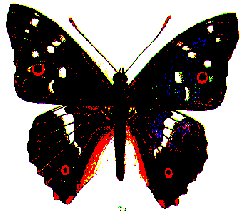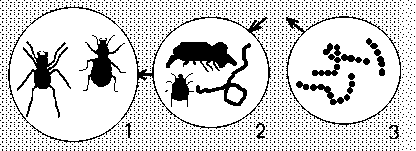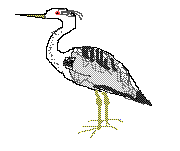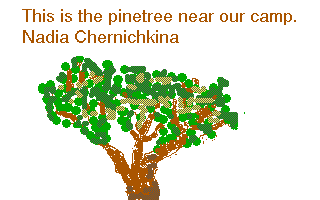

The International Children's Computer Camp (ICCC) is located on the territory of a unique nature preserve. The preserve is called the Pereslavl Governmental Nature-Historical Natural Park "Urochishche Kukhmar." Here, in a comparatively small area, coexist several types of forest ecosystems. We take advantage of this diversity and get to know the various characteristics of the plants and animals which live in these ecosystems. We try to find ecological trails through the woods which will allow us to see various types of forest ecosystems. The participants in the project catalog and describe the plants and animals which live along these trails.
The department of Biology and Ecology is working on the project "Description of Ecological Trails in the Urochishche Kukhmap Nature Preserve." The children act as trailblazers -- they decide themselves where to put the trails. They study the surroundings of the camp and decide where to place the main observation points of the trails, and then make an illustrated discription of the trails. The following types of activities make up the project:
 The search for observation points and the development of routes.
The search for observation points and the development of routes.
 The creation of maps of the observation points and the routes of the
trails.
The creation of maps of the observation points and the routes of the
trails.
 The study of the diversity of the plant and animals life at each
observation point.
The study of the diversity of the plant and animals life at each
observation point.
 The drawing of pictures on the computer about the trails.
The drawing of pictures on the computer about the trails.



Shown above are the protected Makhaon butterfly, Papilia
machaon L. and the Apatura ilia L. Recently the numbers
of these butterflys have been declining, but here in the nature preserve
they are still seen often.
Besides these butterflies, a lot of other rare and protected types of
butterflies and moths live in the nature preserve.

|
This protected plant Dactylorhiza Nevski, is one of five northern types which is found in the Yaroslavl region. This plant can be seen at the sixth observation point on the ecological trail. |



This old pine tree (Pinus sylvestris) is in anunusual shape and grows near our camp. It is 1 meter in diameter, and about 3.5 meters in circumference. It's about 30 meters tall, and experts have deduced that it is about 150 years old.